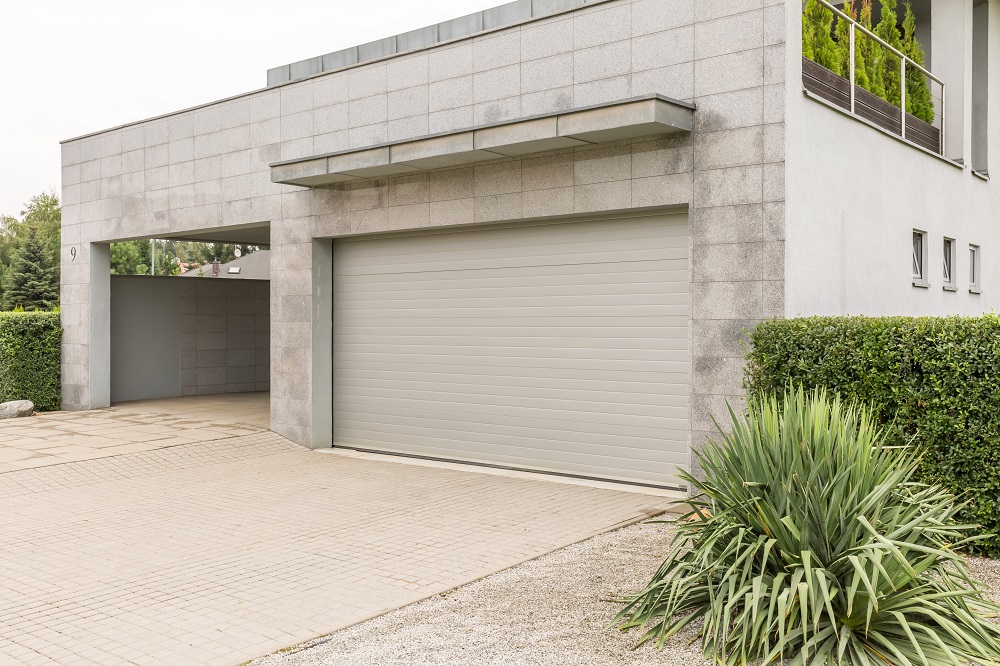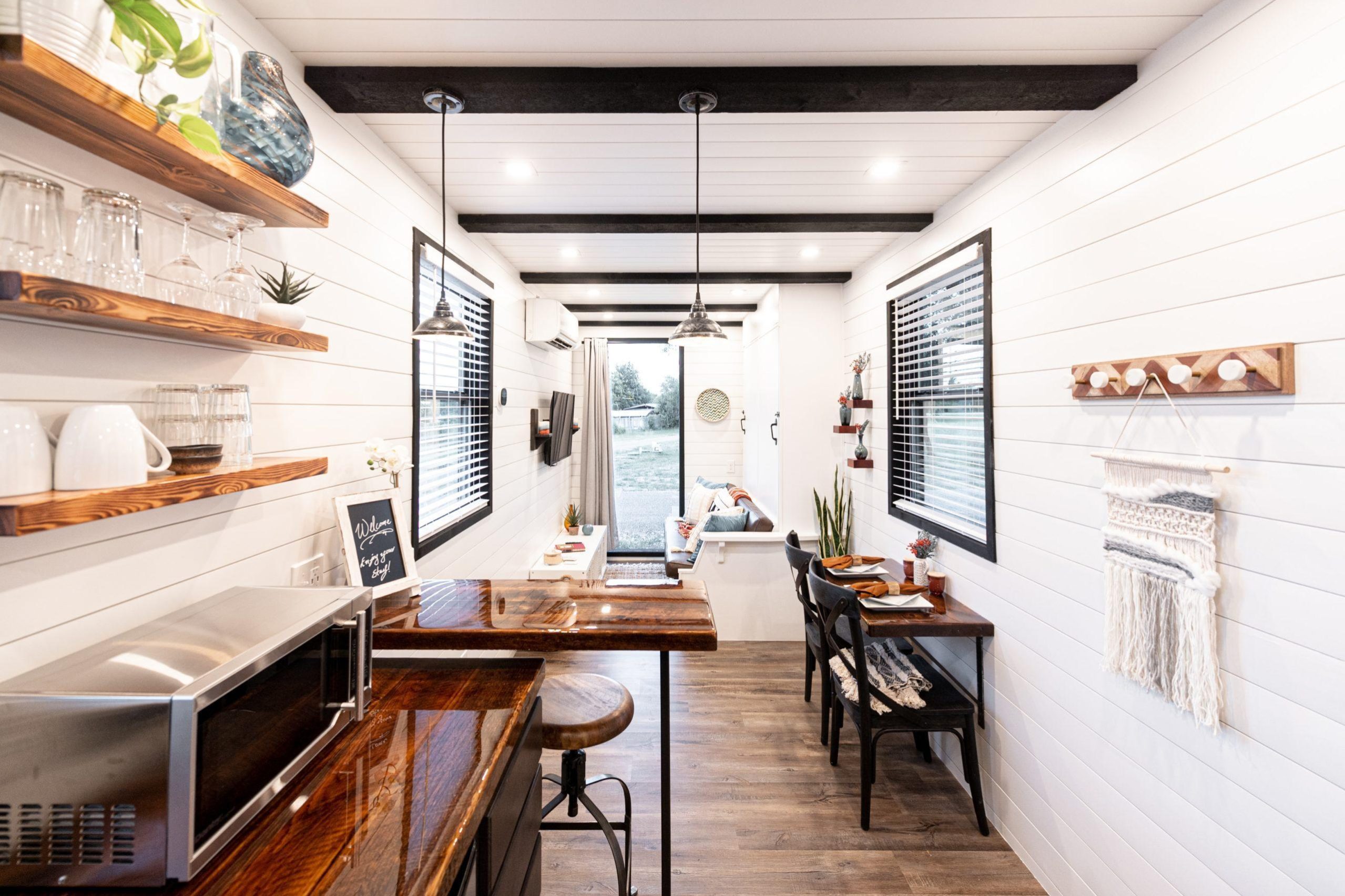
ADU garage conversion is becoming an increasingly popular option for homeowners looking to add extra living space to their property. An Accessory Dwelling Unit (ADU) is a self-contained living space that is attached or detached from the main house. Garage conversion is a popular way to create an ADU, as it is often easier and more cost-effective than building a new structure from scratch.
Understanding ADU Garage Conversion ADU garage conversion involves converting an existing garage into a self-contained living space. This can be done by adding insulation, electrical and plumbing systems, as well as windows and doors. The converted space can be used for a variety of purposes, such as a guest house, rental unit, home office, or even a personal gym.
Key Takeaways
- ADU garage conversion is a popular way to create extra living space on a property.
- Converting a garage into an ADU can provide additional living space, generate rental income, and increase the value of the property.
- ADU garage conversion is often a more cost-effective and sustainable option compared to building a new structure from scratch.
Understanding ADU Garage Conversion
ADU garage conversion refers to the process of converting a garage into a living space that can be used as a separate dwelling unit. This type of conversion has become increasingly popular in recent years, as it provides homeowners with an opportunity to increase the living space on their property without having to build an entirely new structure.
Benefits of ADU Garage Conversion

ADU garage conversion is becoming popular among homeowners who want to increase their property value and add more living space to their homes. Here are some benefits of ADU garage conversion:
Increasing Property Value
One of the most significant benefits of ADU garage conversion is increased property value. Adding an ADU to your property can increase the value of your home by up to 30%. This is because an ADU is an additional living space that can be used for a variety of purposes, such as a rental unit or a guest house. You should put money into it because it will be worth it in the end.
Additional Living Space
Another benefit of ADU garage conversion is the additional living space it provides. An ADU can be used for various purposes, such as a home office, a gym, a playroom, or a guest house. It allows homeowners to use the space for their specific needs. Moreover, an ADU can be designed to match the style and architecture of the main house, making it a seamless addition to the property.
Rental Income Opportunities
ADU garage conversion also provides rental income opportunities for homeowners. Renting out the ADU can provide a significant source of passive income. Moreover, ADUs are in high demand, especially in urban areas, as they provide affordable housing options for renters. Homeowners can earn a steady stream of income by renting out their ADU, which can help pay off the mortgage or fund other investments.
In conclusion, ADU garage conversion is an excellent investment for homeowners who want to increase their property value, add more living space, and generate rental income. It is a smart and practical investment that can pay off in the long run.
Planning Your ADU Garage Conversion

When planning an ADU garage conversion, several important factors must be considered. This section will cover the key aspects of budgeting, designing, and permitting that must be taken into account.
Budgeting
The first step in planning an ADU garage conversion is determining your budget. This will involve assessing the costs of materials, labor, and any necessary permits. It is important to be realistic about your budget and to factor in unexpected expenses that may arise during the conversion process.
One way to save money is to use existing structures and features of the garage, such as the foundation, walls, and roof. This can help to reduce the cost of materials and labor. It is also important to consider the long-term costs of the conversion, such as maintenance and energy costs.
Designing
The design of your ADU garage conversion will depend on your specific needs and preferences. It is important to consider factors such as the size of the space, the number of rooms, and the layout. You may also want to consider features such as insulation, lighting, and storage.
It is important to work with a professional designer or architect to ensure that your design is functional, safe, and meets all necessary building codes. They can also help to ensure that your design is aesthetically pleasing and adds value to your property.
Permitting
Permitting is an important aspect of any ADU garage conversion. You will need to obtain the necessary permits from your local government before beginning construction. This will involve submitting plans and obtaining approvals from various departments, such as zoning, building, and fire safety.
It is important to work with a professional contractor who is familiar with the local permitting process and can help to ensure that all necessary permits are obtained. Not getting the right licenses can lead to fines and legal problems in the future.
In conclusion, planning an ADU garage conversion requires careful consideration of budgeting, designing, and permitting. By taking the time to plan and work with professionals, you can ensure that your conversion is safe, functional, and adds value to your property.
Choosing the Right Contractor

When it comes to converting your garage into an ADU, choosing the right contractor is crucial. This decision can make or break the success of your project. Here are a few things to keep in mind when selecting a contractor:
Experience and Expertise
It’s important to choose a contractor who has experience and expertise in garage conversions. Look for a contractor who has completed similar projects in the past and has a portfolio of work to show for it. They should have references and reviews from past customers that you can look at.
Licenses and Insurance
Make sure the contractor you choose is licensed and insured. This will protect you in case of any accidents or damages that occur during the project. Ask to see their license and insurance certificates before hiring them.
Communication and Transparency
Communication is key when working with a contractor. Choose someone who is easy to communicate with and keeps you updated throughout the project. They should be transparent about their pricing, timeline, and any potential issues that may arise.
Quality of Work
Don’t sacrifice quality for price. Choose a contractor who values quality workmanship and uses high-quality materials. Make sure they provide a warranty for their work.
By keeping these factors in mind, you can choose the right contractor for your ADU garage conversion project.
Conversion Process

Initial Inspection
Before starting the conversion process, a thorough inspection of the garage is necessary. The inspection includes checking the foundation, walls, roof, and electrical and plumbing systems to ensure they are in good condition. The inspector will also check the garage’s size and layout to determine if it meets the local building codes and zoning regulations.
Design and Planning
Once the inspection is complete, the homeowner can start designing the ADU garage conversion. The design should be based on the homeowner’s needs and preferences. The design should also consider the local building codes and zoning regulations. The homeowner can hire an architect or a contractor to help with the design and planning process.
The planning phase also involves obtaining the necessary permits and approvals from the local building department. The homeowner needs to submit the design plans to the building department for review and approval. The building department will check the plans to ensure they meet the local building codes and zoning regulations.
Construction
After the design and planning phase, the construction of the ADU garage conversion can begin. The construction process involves demolishing the existing garage walls, installing new walls, floors, and ceilings, and adding electrical and plumbing systems. The construction process also includes installing windows, doors, and insulation.
The homeowner can hire a contractor to do the construction work or do it themselves if they have the necessary skills and experience. The construction process can take several months to complete, depending on the size and complexity of the project.
Final Inspection
Once the construction is complete, a final inspection is necessary. The building department will send an inspector to check the ADU garage conversion to ensure it meets the local building codes and zoning regulations. The inspector will check the electrical and plumbing systems, the walls, floors, and ceilings, and the windows and doors. If the ADU garage conversion passes the final inspection, the homeowner can move in.
In conclusion, the ADU garage conversion process involves four main steps: initial inspection, design and planning, construction, and final inspection. The homeowner needs to ensure that they follow the local building codes and zoning regulations to avoid any legal issues. The homeowner can hire a contractor or do the work themselves, depending on their skills and experience.
Legal and Zoning Considerations

Garage conversions to ADUs are subject to local zoning laws and building codes. It is important to check with the local building department to ensure that the project complies with all applicable regulations.
Some cities and counties have specific requirements for ADUs, such as minimum lot size, setback requirements, and parking requirements. In addition, some areas have restrictions on the number of ADUs that can be built on one property. Homeowners should consult with their local zoning department to determine what regulations apply to their property.
In some cases, homeowners may need to obtain a permit to convert their garage into an ADU. The permit process typically involves submitting plans and obtaining approval from the local building department. Homeowners should be prepared to pay fees for the permit and any required inspections.
It is also important to consider the legal implications of renting out an ADU. Homeowners should familiarize themselves with local landlord-tenant laws and ensure that their lease agreements comply with all applicable regulations. They should also consider obtaining liability insurance to protect themselves in case of accidents or injuries on the property.
Overall, converting a garage into an ADU can be a great way to add additional living space to a property. However, homeowners should be aware of the legal and zoning considerations involved and ensure that they comply with all applicable regulations.
Cost Considerations
When considering an ADU garage conversion, it’s essential to factor in the costs involved. The total cost will depend on various factors, including the size of the garage, the materials used, and the complexity of the conversion.
One of the most significant costs of a garage conversion is labor. Hiring a licensed contractor to handle the conversion can add up quickly. However, it’s essential to work with a professional to ensure that the conversion meets building codes and is safe for occupancy.
Another important cost consideration is materials. The cost of materials will depend on the type of finishes and fixtures used. For example, high-end finishes such as granite countertops and hardwood flooring will cost more than laminate countertops and vinyl flooring.
It’s also important to consider any additional costs associated with the conversion, such as permits and inspections. These costs can vary depending on the location and scope of the project.
Overall, the cost of an ADU garage conversion can range from $20,000 to $100,000 or more. It’s important to create a budget and stick to it to avoid any unexpected expenses.
Potential Challenges and Solutions

Converting a garage into an ADU can present some challenges that need to be addressed before starting the project. Here are some potential challenges and solutions to consider:
1. Zoning and Building Codes
Before starting any construction work, it is important to check the local zoning and building codes to ensure that the garage conversion is allowed in the area. Some cities or counties may have specific requirements that need to be met, such as minimum square footage, ceiling height, and parking space. The solution is to consult with a professional contractor or architect who is familiar with the local regulations and can help navigate the permitting process.
2. Structural Issues
Garages are not always built to the same standard as residential homes, and may lack proper insulation, ventilation, and foundation. This can lead to structural issues such as moisture buildup, mold growth, and uneven floors. The solution is to have a structural engineer inspect the garage and recommend any necessary repairs or upgrades before starting the conversion.
3. Plumbing and Electrical
Garages may not have the necessary plumbing and electrical systems for a living space, such as a bathroom, kitchen, or heating/cooling. The solution is to hire a licensed plumber and electrician to install the necessary systems and ensure that they meet the local codes and safety standards.
4. Access and Privacy
Converting a garage into an ADU may affect the access and privacy of the main house and the neighbors. The solution is to design the ADU with a separate entrance, soundproofing, and landscaping that provides privacy for both the main house and the ADU residents.
Addressing these potential challenges and finding the right solutions, converting a garage into an ADU can be a rewarding and cost-effective way to add living space and rental income to a property.
Frequently Asked Questions
What are the permit requirements for a garage conversion in Livermore?
In Livermore, a permit is required for any garage conversion into an ADU. The permit process involves submitting plans and obtaining approval from the local building department. Additionally, the conversion must comply with zoning and building codes, including minimum ceiling height, ventilation, and electrical requirements.
What are the consequences of converting a garage without a permit?
Converting a garage into an ADU without a permit is illegal and can result in fines and penalties. Moreover, a non-permitted conversion may not be recognized as a legal dwelling unit, which can affect its resale value and insurance coverage.
How much does it cost to convert a garage into an ADU in Livermore?
The cost of converting a garage into an ADU in Livermore varies depending on factors such as the size of the garage, the complexity of the conversion, and the materials used. On average, a garage conversion can cost between $50,000 to $100,000 or more.
What are the California laws regarding garage conversions?
California state law allows for the conversion of garages into ADUs, provided that the conversion complies with local zoning and building codes. In addition, state law allows for the construction of ADUs on single-family residential lots, subject to certain requirements.
Is converting a garage into an ADU worth the cost?
Converting a garage into an ADU depends on individual circumstances such as the homeowner’s budget, needs, and goals. However, converting a garage into an ADU can provide additional living space, rental income, and increased property value.
Can a garage be converted into a room without planning permission?
In Livermore, converting a garage into a room without planning permission is generally not allowed. If a conversion is made without a permit, it can result in fines, penalties, and legal and financial consequences.

